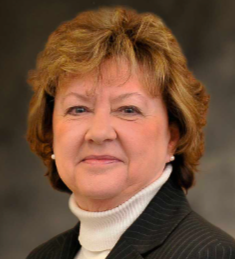Advising model boosts community college retention as students flee 4-year degree
Joshua Bay | September 18, 2024
Your donation will help us produce journalism like this. Please give today.

Eamonn Fitzmaurice/LA School Report
A new report has found a continuing trend of students leaving four-year colleges compared to two-year programs — with experts pointing to a successful advising model in helping to increase community college retention.
The National Student Clearinghouse Research Center found by the start of the 2022-23 academic year the number of students who left their respective college grew to nearly 37 million — a 2.9 percent growth compared to the previous year.
But the overall number of students ages 18 to 64 leaving was largely seen in four-year schools compared to two-year programs.
Josh Wyner, founder and executive director of the Aspen Institute College Excellence Program, said the guided pathways advising model utilized at community colleges across the country has contributed to their retention by developing an individualized plan for students to schedule classes and monitor progress.

“What that means is [community colleges] have created a much clearer pathway to a degree and restructured their advising systems to ensure students get on those pathways early on,” Wyner told The 74, noting schools such as the Alamo Colleges District and San Jacinto College in Texas as prime examples of successful models.
Laurel Williamson, deputy chancellor and president at San Jacinto College, said the advising model is particularly helpful for first generation college students.
“It used to be just giving the student a schedule or telling them to go online and pick some classes — that’s crazy,” Williamson told The 74. “Students don’t know how to pick classes…[and] we weren’t consciously thinking about it from the student experience side.”

Today nearly 400 community colleges in 16 states have implemented guided pathways reforms, according to the Community College Research Center that designed the advising system in 2015.
“Guided pathways have enabled community colleges to reduce the number of students leaving and therefore having less of a population of ‘some college no degree’ adults,” Wyner added.
Williamson said Texas has been “proactive” about using guided pathways, noting 48 of the 50 community colleges have adopted the advising system.
“[Guided] pathways bring you to focus on what is really important in terms of student completion and student goals,” Williamson said. “It could be a one year certificate, it could be an associate degree. But to boil that down, it is entry into the workforce at a family sustaining wage or an on-ramp to transfer with no loss of credits and junior status at a university.”
Since adopting the model in 2016, Williamson said the key benefit for students is the “thought out” academic advising.
“If you come in and say ‘I want to be a communications major and I want to transfer to the University of Houston-Clear Lake campus we map out the whole trajectory from your entry here to your completion of a bachelor’s degree at Clear Lake so there’s no confusion,” Williamson said.
Mike Flores, chancellor at the Alamo Colleges District, agreed with Williamson and emphasized how the advising system is flexible if a student decides to change their major.
“If the catalog changes, the core requirements change or anything in the general education requirements change at the receiving institution, then our folks are some of the first to know and they then revise the advising guide accordingly,” Flores told The 74.
Guided pathways have helped drive down the schools’ degree completion rates from 4.4 to 3.6 years.
“We know time is the enemy of degree completion for our students because education is just one of multiple commitments that they have in their lives,” Flores said, noting that 65 percent of his students are part-time and taking two to three courses each term.
“It’s saving them time and it’s saving them money, and in turn, we see more students graduating,” Flores said.
Growth in Students Leaving College
The report found the number of students leaving a public four-year school increased by 2.9 percent. But public two-year schools decreased by 4.1 percent — or 52,100 students.
The report also noted the population of students leaving college continues to be less white and more male than the overall undergraduate population — with Latino and Black students disproportionately represented.
Latino and Black students were 24.4 and 19.1 percent of the students leaving college compared to being 21.5 and 14 percent of all enrolled undergraduates in the 2022-23 academic year.
Wyner believes this disparity is due to students’ enrollment patterns, noting that Black, Latino, Native American and low-income students often don’t choose majors that lead to well paying jobs.
“When we look at which programs those populations are engaged in, they tend to be in programs of study that are less likely to lead to a job with a family-sustaining wage or for a community college student to get a bachelor’s degree,” Wyner said, such as general studies which signals students are entering school without a clear post-graduate plan.
He added that community colleges using guided pathways have seen an increase in degree completion because of their emphasis on career advising.
“When students don’t have a promise that the degree and programs they’re enrolled in are likely to lead to strong outcomes, then the chances they’re going to drop out are likely to be much greater,” Wyner said.
“If I don’t see a pot of gold at the end of the rainbow,” said Wyner, “why continue to travel across that rainbow?”
This article was published in partnership with The 74. Sign up for The 74’s newsletter here.